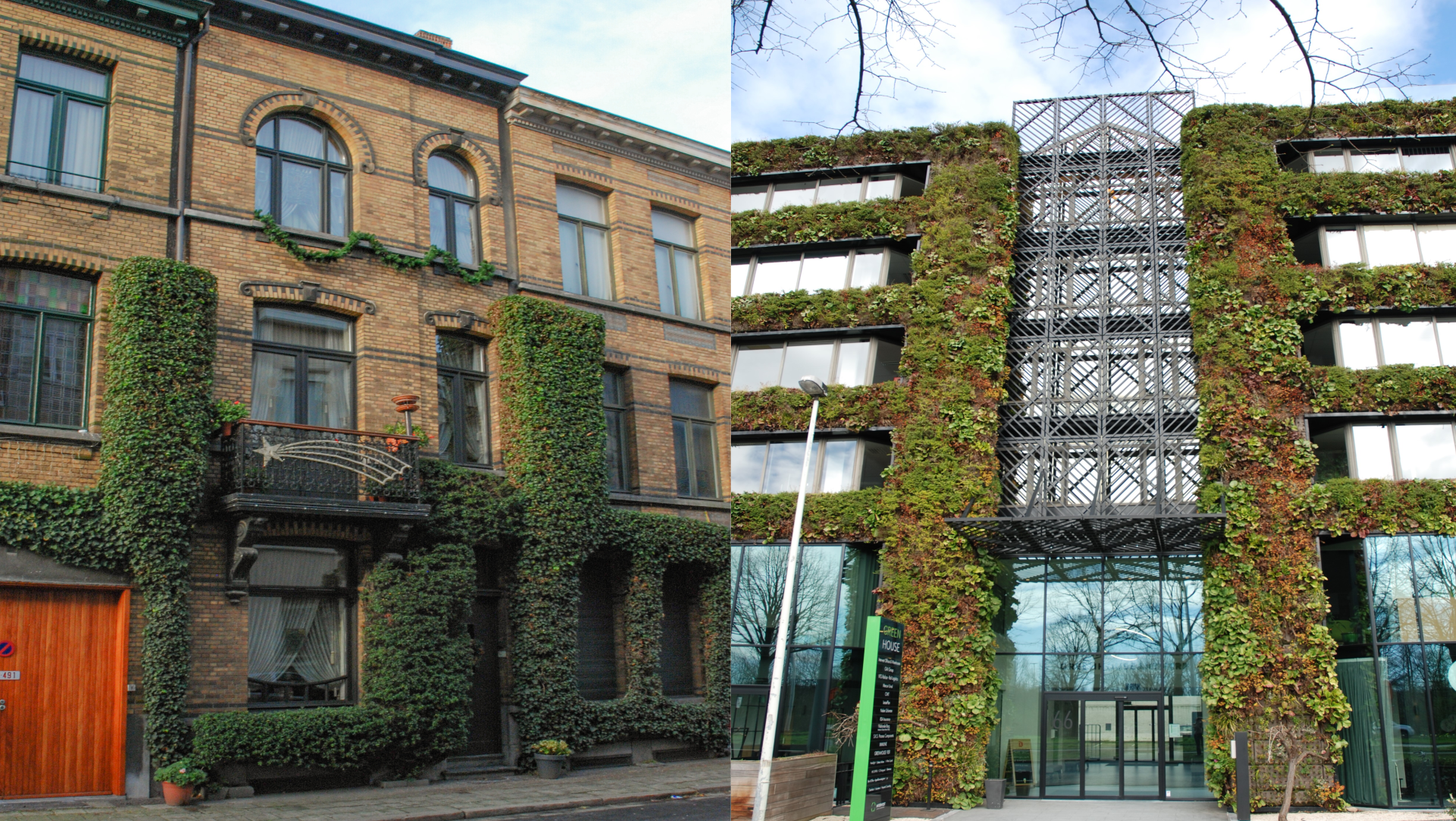Explaining what your research is about in a clear and concise way isn’t easy, especially if your audience has little or no prior knowledge of the subject. That’s why UAntwerp organises PRESS>SPEAK, an annual writing and presenting competition for young researchers taking their first steps in science communication. Every year, the winners of the writing contest are featured on the Pintra blog.
For the PRESS>SPEAK writing competition, researchers were instructed to explain their research in a text of 2000 characters or less. They also had to come up with a short and pithy title, a striking subtitle, and a picture illustrating the difference their research aims to make in society. The second winning text, written in Dutch by Tess Ysebaert (Faculty of Science), is about green façades used as air filter. Below is the English translation.
Green façades for better air quality in cities
It’s an increasingly common sight in cities: walls that are overgrown with plants. If you look closely, you’ll see black dust on the leaves of these green façades. That’s because these plants filter particulate matter from the air, improving air quality. But which type of green façade makes the best air filter? Scientists at the University of Antwerp are using a wind tunnel to investigate.
Natural air filtration
Plants obstruct airflow, and particulate matter in the air is deposited on their leaves. Thanks to the complex structures formed by their leaves and branches, plants can perform this filtration function very efficiently. It remains unclear, however, what the exact influence of green façades is on particulate matter concentrations. To investigate this, scientists have built a wind tunnel specifically for plants, linked to machines that can accurately reproduce the composition of particulate matter in cities. The system is providing new insights into the process of particulate matter deposition on different plant types, allowing the scientists to determine which plants are best suited to cleaning the air. Based on the results of these experiments, they can set up a mathematical model to simulate the influence of a green façade on particulate matter concentrations in a real street. The model can also help them improve the potential of green façades as particulate matter filters.
Solution for ‘street canyons’
Exposure to air pollution like particulate matter is detrimental to human health. Although emissions are decreasing in cities, particulate matter concentrations remain too high in places with heavy traffic and also in what’s known as ‘street canyons’ – narrow streets with high buildings on either side, which trap air pollution in the middle. Here, green façades offer significant advantages over other urban greenery, because they can grow on the vast wall surfaces available, and because they don’t impede air circulation the way trees do. The results of this research will make it possible to select the most suitable plants and surface areas for any given location to remove particulate matter from the air most effectively. This way, both outdoor and indoor air quality will improve dramatically. By focusing on green façades, science is working towards greener cities with better air quality for everyone.



